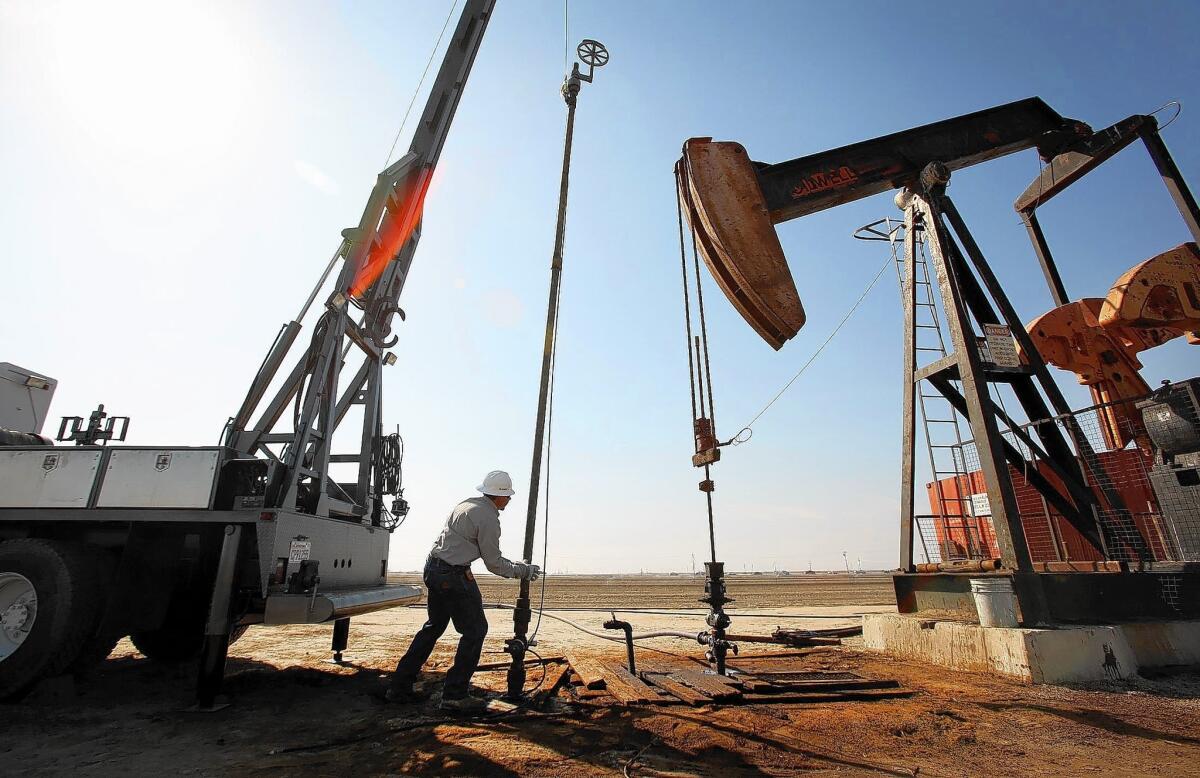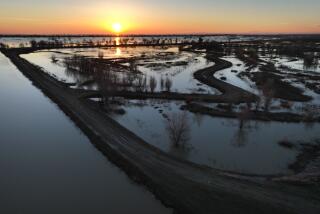Limited water presents challenge for natural gas fracking

- Share via
Reporting from Washington — Extracting natural gas for energy from shale rock deep underground requires lots of water, but much of the world’s shale gas is in regions where water is already scarce, including part of California, according to a study issued Tuesday.
The amount of recoverable natural gas from shale formations would increase global reserves by nearly half, the report from the World Resources Institute found. That’s a potentially enormous boost for the international economy and for reduction of greenhouse gases that cause climate change, as gas used for power generation burns more cleanly than coal.
But increased oil and gas development raises thorny questions about how to allocate water in areas where it’s limited.
Gas from shale formations, long inaccessible because of their geology, has been unlocked in recent years by high-volume hydraulic fracturing, or fracking, which involves underground injection of millions of gallons of water mixed with sand and chemicals. The demand for water for fracking has already stoked tensions in the United States as the practice has spread to areas where water resources are limited, such as Texas and Colorado.
Worldwide, 38% of shale resources are located in regions that “are either arid or under high to extremely high levels of water stress,” including portions of China, the Middle East, Mexico and Pakistan, the study says.
The picture for the United States is varied, with roughly the same amount of shale gas and oil resources in such areas. East Coast shale gas deposits are in areas, such as the mid-Atlantic, that have historically had adequate amounts of water. But some of the most promising shale gas deposits in the West are in places where there is far greater competition for more limited water resources, especially from agriculture.
Ten gas deposits “sit atop aquifers that are being withdrawn at rates that far exceed their natural recharge rate,” the report found. They include California’s Monterey formation, which covers the southwest coastal region around Los Angeles and inland near Bakersfield, and others in the Rockies and Texas.
Limited water in areas of the U.S. with promising gas deposits poses considerable challenges and risk to companies operating there, including increased regulation and costs and the possible loss of reputation, the study found.
Right now, the U.S. and Canada are the only countries fracking for shale gas, though many others are exploring the idea, said Paul Reig, an environmental scientist and the report’s lead author. China has the largest reserves of any country, but each of its six major shale deposits comes with challenges to water access from such factors as seasonal variability, population density and drought.
The report’s authors recommended that government officials and industry assess the risks fracking could pose to local water resources and that companies work to reduce their use of fresh water.
Reig said he found that companies were already working toward lessening their demand for fresh water by fracking with brackish water or treated wastewater, for example.
Katie Brown, a spokeswoman for the industry group Energy in Depth, said that overall, oil and gas development has little effect on water resources. “Water use is important, but even in the most prolific oil and gas states, producers only account for a fraction of 1% of their state’s total water use,” she said.
But Jay Famiglietti, senior water scientist at the Jet Propulsion Laboratory in La Cañada Flintridge, said looking at the oil and gas industry’s use of water by state or region is misleading. Because most fracking is done in a limited area, it “can use nearly 100% of local water supply,” he said. “Its environmental impacts can be devastating.”
Famiglietti said he expected that states would vary in their reactions to the report’s most worrisome findings. Gripped by drought and filled with popular resistance to fracking, California might pay closer attention to such studies.
“Are government and industry taking reports like this to heart? Only time will tell,” Famiglietti said. “Since the shales are viewed as a major pathway towards energy independence, their massive water requirements and threats to water quality are often overlooked.”
More to Read
Sign up for Essential California
The most important California stories and recommendations in your inbox every morning.
You may occasionally receive promotional content from the Los Angeles Times.














